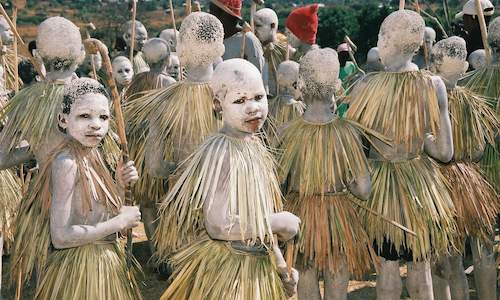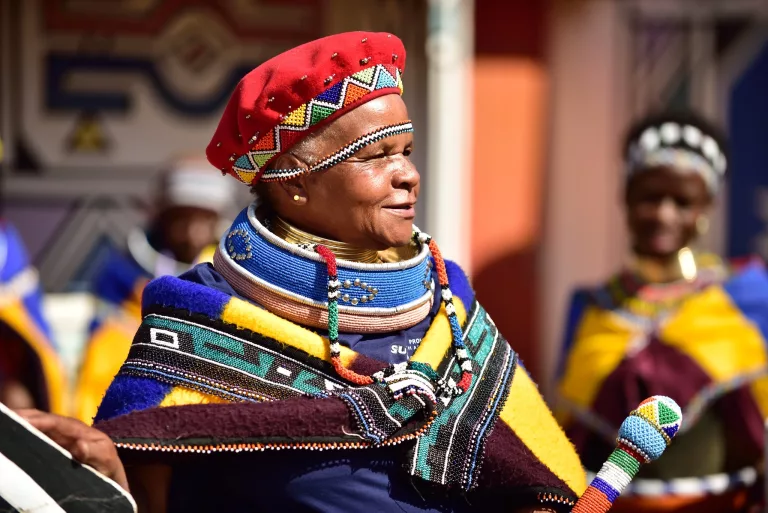9 Simple Techniques For South African Culture Today
9 Simple Techniques For South African Culture Today
Blog Article
South African Culture Today Fundamentals Explained
Table of ContentsRumored Buzz on South African Culture TodayNot known Factual Statements About South African Culture Today Things about South African Culture TodayThe Facts About South African Culture Today RevealedA Biased View of South African Culture TodayGetting My South African Culture Today To Work
A matter of importance in Zambian villages is the passing away of liked ones. All participants of the village put money, time and initiative with each other for the funeral of the deceased.Throughout the mourning duration; men stay outside the home and the women stay inside the house of the deceased. After speaking regarding the departed, the town strolls to the area of interment to state their last farewells. Music and dance is an extremely vital aspect of the Zambian society. The different tribal systems have their own dancing forms; nevertheless, makishi prevails among all tribes.
Not known Details About South African Culture Today
When it pertains to music, drums are used the most, with a variety of drumming ceremonies. In Zambia, bulk of individuals are Christian; Protestant and Roman Catholic. There are tiny teams of Muslims and Hindus, with the remainder adhering to regional native tribal beliefs.

South African heritage and society is tremendously diverse, and includes several teams of individuals that each have their very own customs and ideas. Having such a variety of individuals and cultures is what makes South Africa so special. In truth sense of the phrase, we are a rainbow nation.
South Africa has roughly three hundred thousand Portuguese people residing in it. Making it the 7th on the checklist of nations with the most Portuguese people in it outside of Portugal. Portuguese is not only a society, but it is likewise a language and a race. Portuguese people stem from the nation of Portugal in Europe, nonetheless, due to Portugal (like numerous various other countries in Europe) checking out the globe and conquering other nations during the 15th 20th centuries, South Africa has what we call Portuguese South African's living in it.
The Buzz on South African Culture Today
Amongst the popular attributes of the topography is a plateau that covers nearly 2 thirds of the facility of the country. The plateau complex climbs toward the southeast, where it climaxes in the Drakensberg array, component of a cliff that divides the plateau from the coastal areas. The Drakensburg includes Champagne Castle, the greatest top in the nation.
The area north of the Witwatersrand, called the bushveld, slopes downward from eastern to west towards the Limpopo River, which develops the worldwide boundary. The western section of the plateau, the middleveld, additionally comes down in the direction of the west and differs in altitude between the highveld and bushveld. Between the Drakensburg and the eastern and southerly coast, the land comes down to the sea.
Nearer the coast there is a low-lying level called the eastern lowveld. Southwest of the plateau the nation becomes gradually much more dry, offering way to the stony desert of the Great Karroo, verged on the east by the reduced, better watered plateau of the Little Karroo. Separating the dry southern inside from the sandy littoral of the southern coastline and West Cape is another range, the Langeberg.
Get This Report about South African Culture Today
The nation's racially, ethnically, and politically divided background has you can find out more generated nationwide and subnational symbols that still operate as signs of the nation, and others symbols that are approved only by certain groups. The monuments to white inhabitant occupation and political supremacy, such as the Afrikaner Voortrekker ("leader") Monument in Pretoria and the Rhodes Monolith recognizing the British colonial empire home builder and Cape head of state Cecil Rhodes, continue to be sectarian symbols.
The first modern occupants were the San ("bushman") hunter-gatherers and the Khoi ("Hottentot") peoples, who herded animals (South African culture today). The San might have been existing for countless years and left proof of their visibility in countless old cavern paintings ("rock art"). Bantu-speaking clans that were the forefathers of the Nguni (today's amaZulu, amaXhosa, amaSwazi, and vaTsonga individuals) and Tswana-Sotho language teams (today's Batswana and Southern and Northern Basotho) moved down from east Africa as very early as the fifteenth century

The two previous republics of the Orange Free State and Transvaal (South African Republic) were established by Afrikaner inhabitants who beat and dispossessed the Basotho and Batswana. Lesotho would certainly have been forcibly included into the Orange Free State without the expansion of British security in 1869. The supreme unification of the country arised from the South African Battle (18991902) in between the British and both Afrikaner republics, which lowered the country to destroy at the beginning of the twentieth century.
Afrikaners traditionally considered themselves the only real South Africans and, while approving complete citizenship to all homeowners of European descent, denied that standing to people of color up until the democratic change of 1994. British South Africans keep a sense of social and social connection to Great Britain without weakening their identification as South Africans.
South African Culture Today for Dummies
The variety and fragmentation within ethnic groups and the equilibrium of stress in between those groups throughout the twentieth century stopped interethnic civil dispute. While intergroup stress over sources, privileges, and political prominence remain, those conflicts are as likely to pit Zulu versus Zulu as Zulu versus Xhosa or African against Afrikaner.
From colonial India, British vendors and managers brought the bent metal ornamental roofings and slender lace job pillars that still represent the verandas of homes in the areas and cities throughout the country. Holy places add a vital building facet even in the smallest towns. Along with the rising steeples and traditional stonework of Afrikaans Dutch Reformed churches, Anglican churches, synagogues, mosques, and Hindu shrines supply variety to the religious architectural scene.

Butchering and the developing of traditional cereal beer are necessary in securing the involvement and goodwill of the ancestors who Click This Link are considered the guardians of good luck, prosperity, and health. Indian communities maintain their indigenous culinary customs and apply them on Islamic and Hindu ritual and ritualistic occasions. Afrikaners and Coloured individuals collect at weekends and unique events at multifamily barbecues called braais, where area bonds are strengthened.
Since this was the primary financial business of both black Africans and white homesteaders, problem between those groups focused on the belongings of grazing land and animals. In 1867, the biggest diamond down payments worldwide were found at Kimberley in the west main location. The wealth from those fields aided fund the exploitation of the best gold coral reef worldwide, which was uncovered on the Witwatersrand in 1886.
The smart Trick of South African Culture Today That Nobody is Talking About
This brought about misunderstandings and intentional misrepresentation in the dealings of white settlers and federal government officials with African principals during the early american duration (South African culture look these up today). In the facility of African gets, some aspects of common and mainly "tribal trust" land period were maintained, and also in white backwoods, types of communal tenure were still exercised in locations with African neighborhoods
After the autonomous improvement of 1994, programs for land restitution, redistribution, and reform were set up, but progress has actually been slow. The white minority still manages eighty percent of the land. In the wake of farming land intrusions in Zimbabwe, the Division of Land Affairs has pledged to speed land redistribution.
Report this page